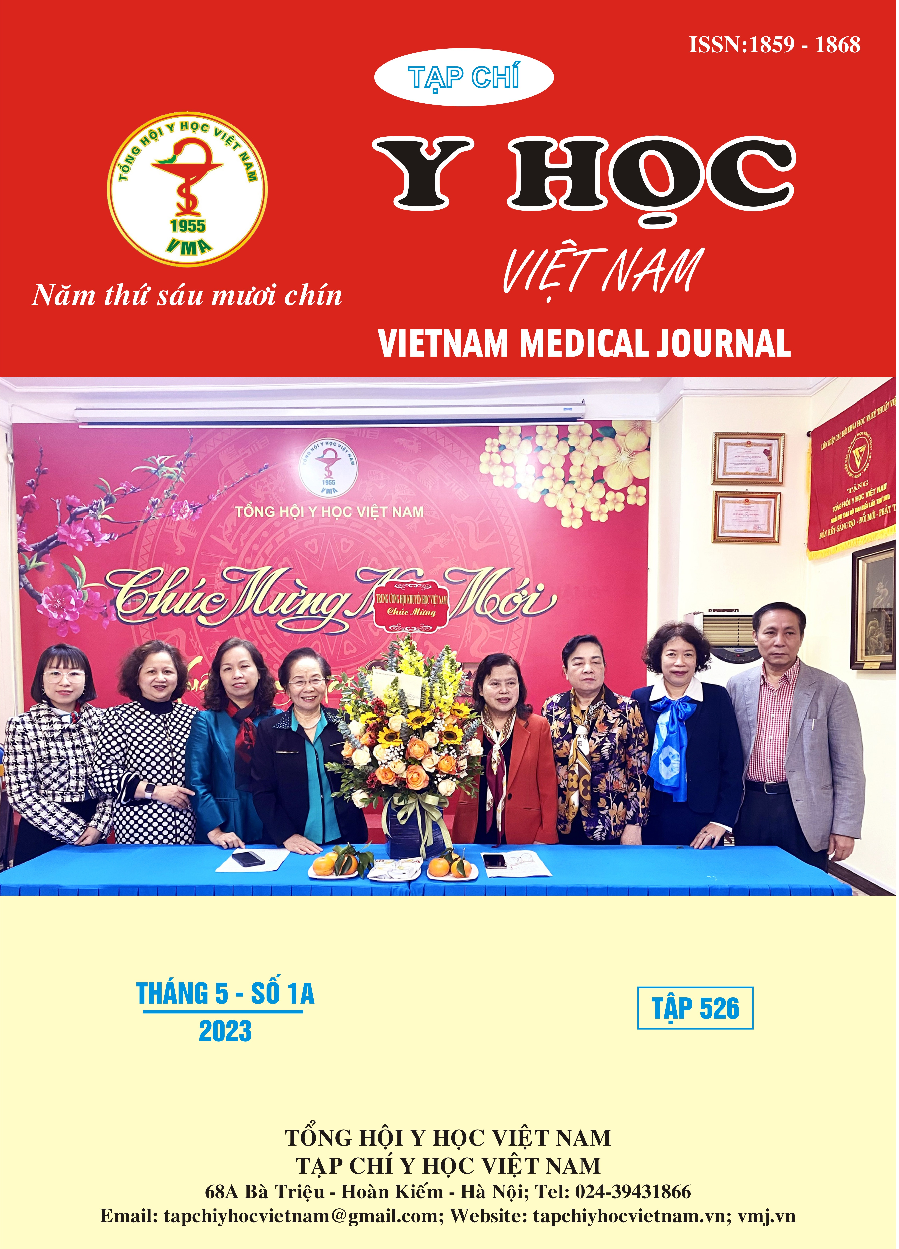COMPARISON OF THE RESULTS OF HEMOSTASIS BY CLIP AND CLIP COMBINED WITH ADRENALIN INJECTION IN GASTROINTESTINAL BLEEDING DUE TO GASTRODUODENAL ULCERS
Main Article Content
Abstract
Bleeding peptic ulcer is the most common cause of hospitalization due to gastrointestinal diasease. The endoscopic hemoclip method is a safe and effective hemostatic therapy for managing bleeding peptic ulcer, there have been few randomized clinnical trials to evaluate their efficacy. However, there are not many studies evaluating the hemostatic efficacy of endoscopic hemoclip in combination with other methods. Objective: To compare bleeding control efficacy of hemoclip versus hemoclip combined with 1/10.000 adrenalin injection peptic ulcer bleeding. Methods: From November 2016 to September 2017, a total of 50 patients with Forrest Ia, Ib, IIa,IIb were divided to 2 groups. The first group received endoscopic hemoclip (N=21) and the second one was injected adrenalin combined with hemoclip (N=29). All of patients followed-up within at least 72 hours. Results: All patients were controlled bleeding during endoscopy procedure. Rebleeding occurred in three patients (14,3%) in the hemoclip group and one patient (3,4%) in the combined group (P >0,05). All of rebleeding patients were perfomed second hemostatic endoscopic. Three patients in the hemoclip group were successful, but we failed to obtain hemostasis with the patient of combined group. After that, this patient was transferred to surgery department, no mortality was recorded. There was no statistically significantly difference between the two groups in the volume of blood, duration of hospital stay, the rate of operation and mortality. Conclusion: The combined method does not provide substantial advantage over the hemoclip method alone in the hemostatic management of bleeding peptic ulcers.
Article Details
Keywords
Bleeding peptic ulcer, hemoclip, adrenalin injection
References
2. Trần Thị Thanh Hảo (2010). "Đánh giá kết quả tiêm cầm máu qua nội soi kết hợp rabeprazole (Rabeloc) tĩnh mạch liều cao ở bệnh nhân xuất huyết tiêu hóa do loét hành tá tràng", Luận văn thạc sỹ y học, Trường Đại học Y Hà Nội.
3. Sung J. Y., Barkun A., Kuipers E. J., et al. (2009). Intravenous esomeprazole for prevention of recurrent peptic ulcer bleeding: A randomized trial. Annals of Internal Medicine, 150 (7), 455-464.
4. Wang H. M., Tsai W. L., Yu H. C., et al. (2015). Improvement of Short-Term Outcomes for High-Risk Bleeding Peptic Ulcers With Addition of Argon Plasma Coagulation Following Endoscopic Injection Therapy: A Randomized Controlled Trial. Medicine (Baltimore), 94 (32), e1343.
5. Lê Hùng Vương (2006). "Nghiên cứu đặc điểm lâm sàng, cận lâm sàng và nội soi của xuất huyết tiêu hóa do loét dạ dày tá tràng", Luận án tiến sỹ y học,Trường Đại học Y Hà Nội.
6. Nunoue T., Takenaka R., Hori K., et al. (2015). A Randomized Trial of Monopolar Soft-mode Coagulation Versus Heater Probe Thermocoagulation for Peptic Ulcer Bleeding. J Clin Gastroenterol, 49 (6), 472-476.
7. Quách Tiến Phòng (2015). Thang điểm Glasgow Blatchford cải tiến trong dự đoán kết cục lâm sàng ở bệnh nhân xuất huyết tiêu hóa trên. Tạp chí y học TP. Hồ Chí Minh, 19 (5), 9-17.
8. Đặng Chiều Dương (2015). Đánh giá kết quả của tiêm, kẹp clip và esomeprazole (Nexium) trong điều trị xuất huyết tiêu hóa do loét dạ dày tá tràng. Tạp chí Y học Việt Nam, 11, 275-282.
9. Garcia-Iglesias P., Villoria A., Suarez D., et al. (2011). Meta-analysis: predictors of rebleeding after endoscopic treatment for bleeding peptic ulcer. Aliment Pharmacol Ther, 34 (8), 888-900.


